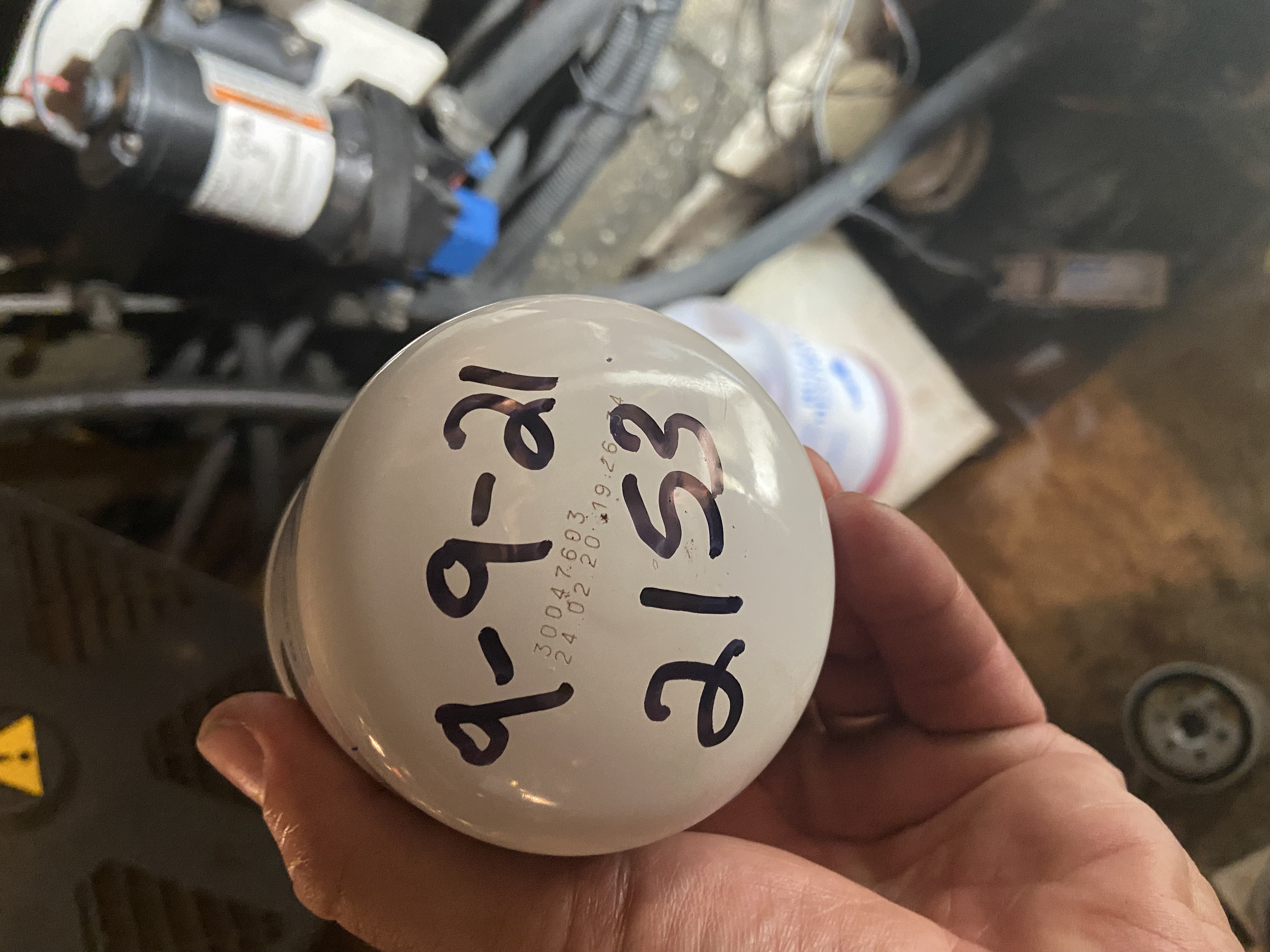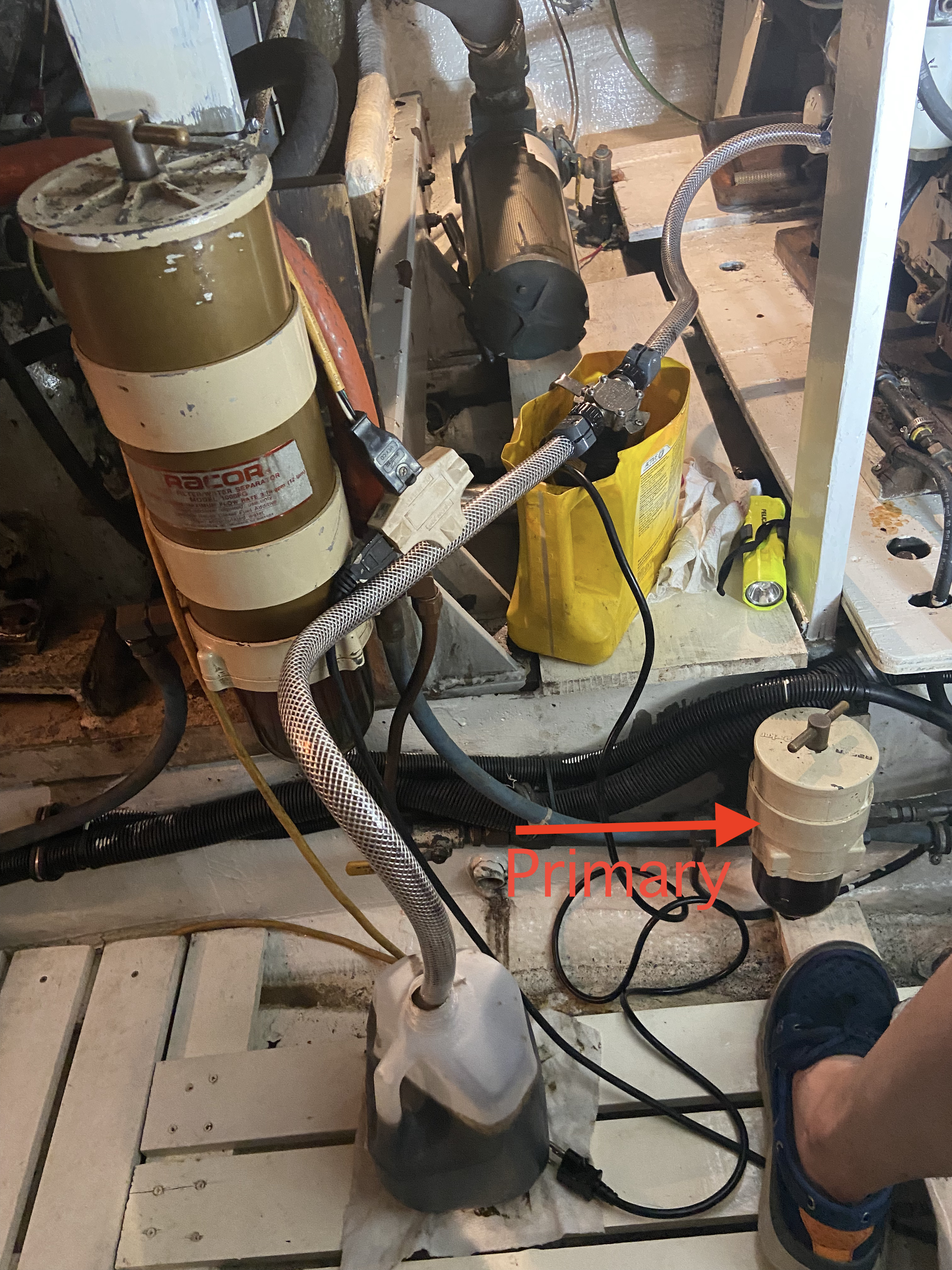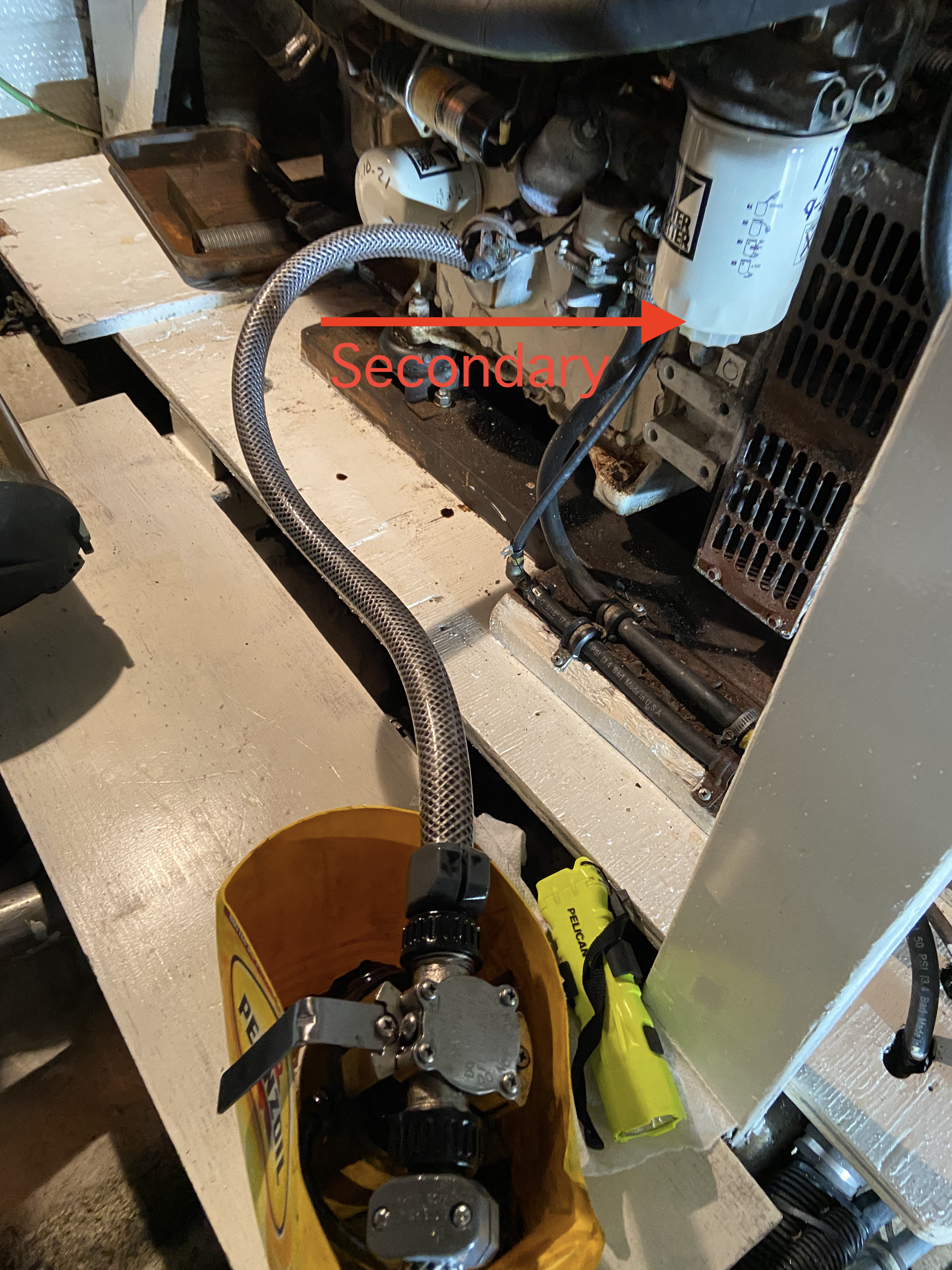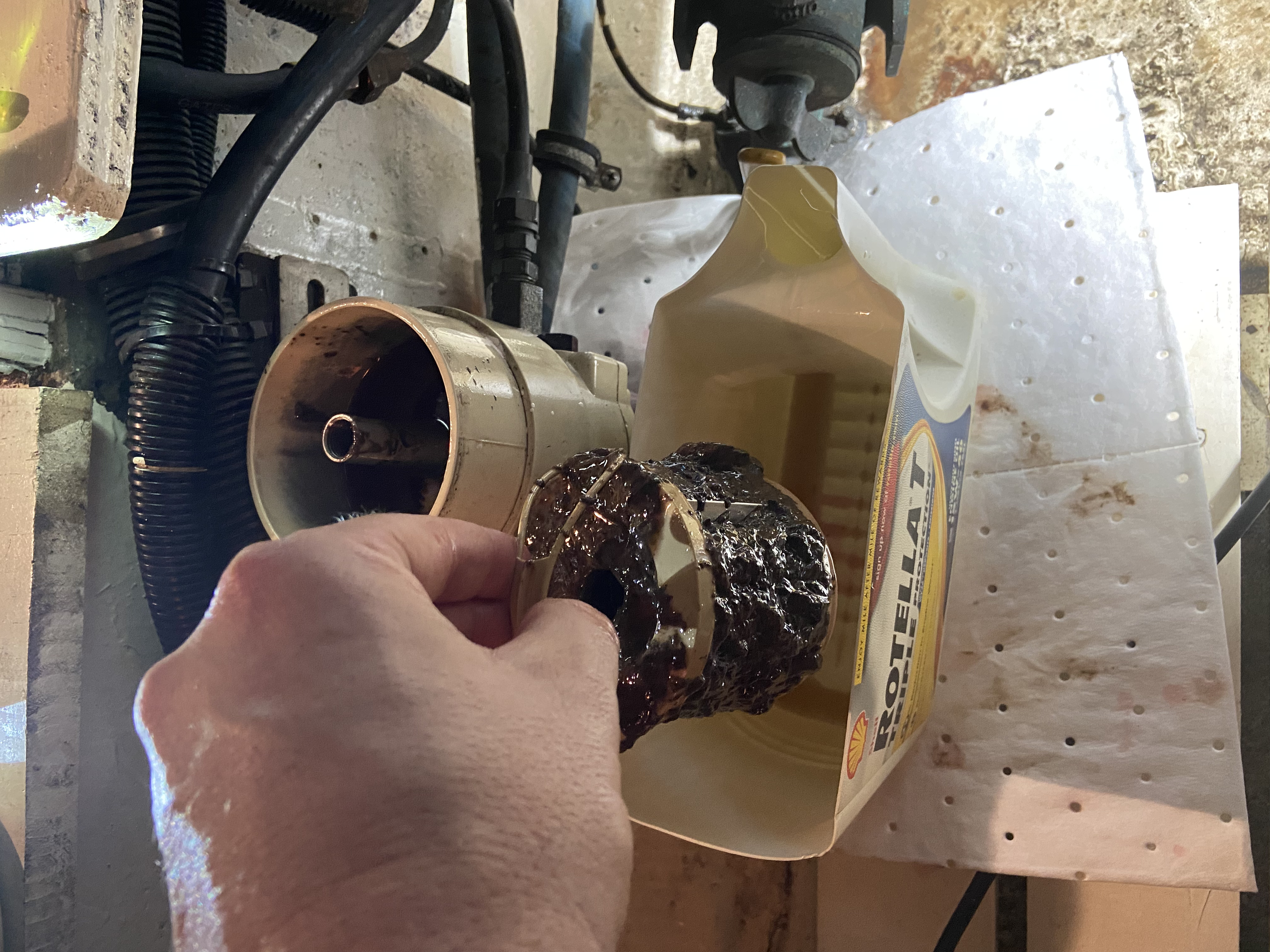Encore has one Lister Petter three cylinder 10kw generator. This generator has performed extremely well. We have put 700 mostly trouble free hours on it since departing the boatyard in June 2020. Other than the fuel return line issue, which was documented here, the generator has been consistently reliable. After our last stay in the hurricane hole for Hurricane Ida, it was time for some maintenance.
Oil and Oil Filter Change
We have been trying to change the oil as close to every 150 hours as possible. This oil change occurred a little over 200 hours since the last change. The extended time interval was due to 100+ hours of use in the hurricane hole dodging Hurricane Ida.
Removing the Used Oil
To remove oil from the engine, a 110 volt pump along with two 3/4” hoses is used. One 3/4” hose connected to the suction end of the pump is placed directly into the fill location and down into the oil pan. Another 3/4” hose connected to the discharge end of the pump is routed into a collection container. An empty one gallon jug in this case. The engine holds just shy of one gallon of oil. When the pump starts to lose suction, I work the hose around and up/down to get as much of the old oil out as possible.
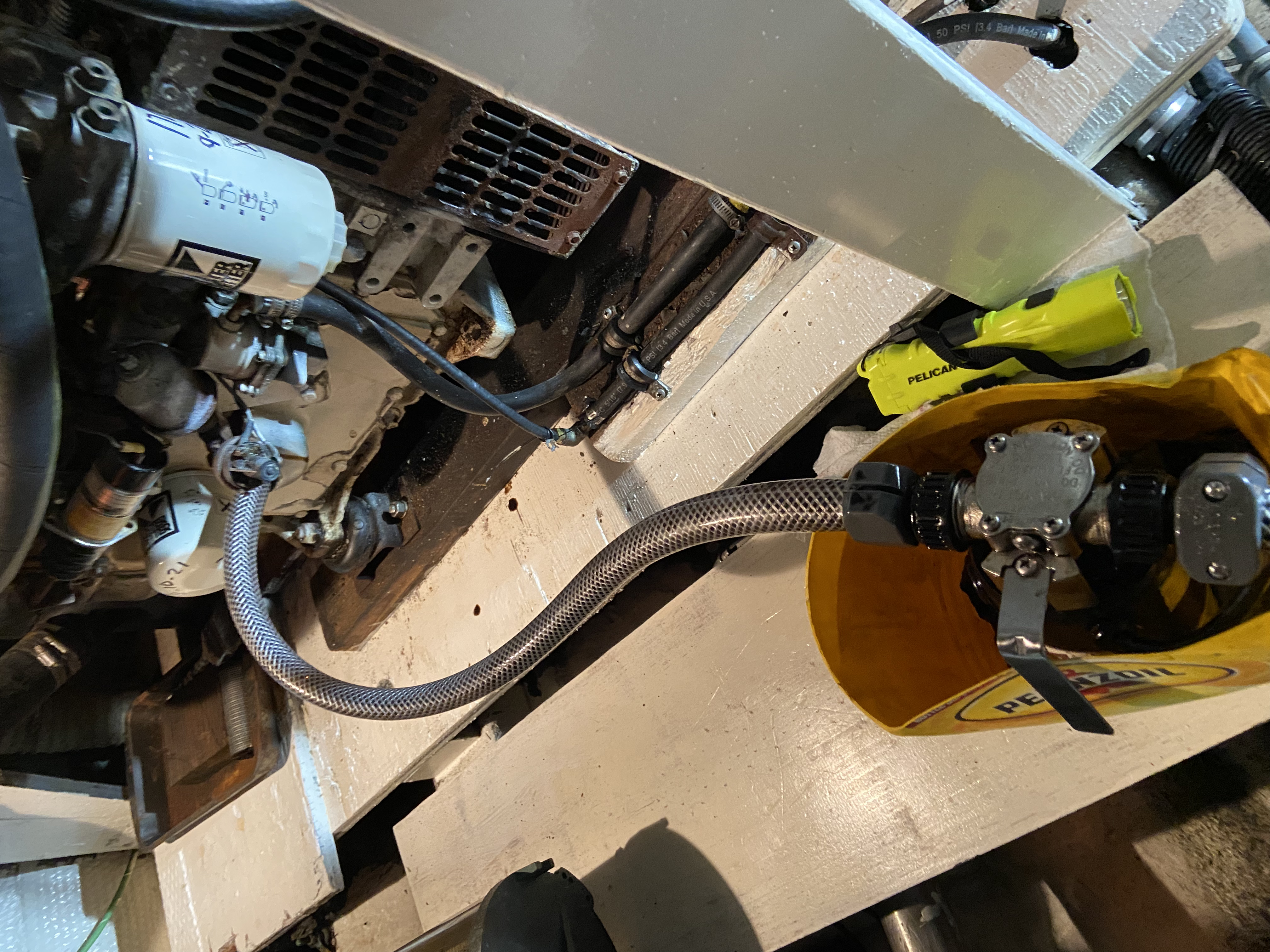
110 volt pump with suction hose routed into the oil fill 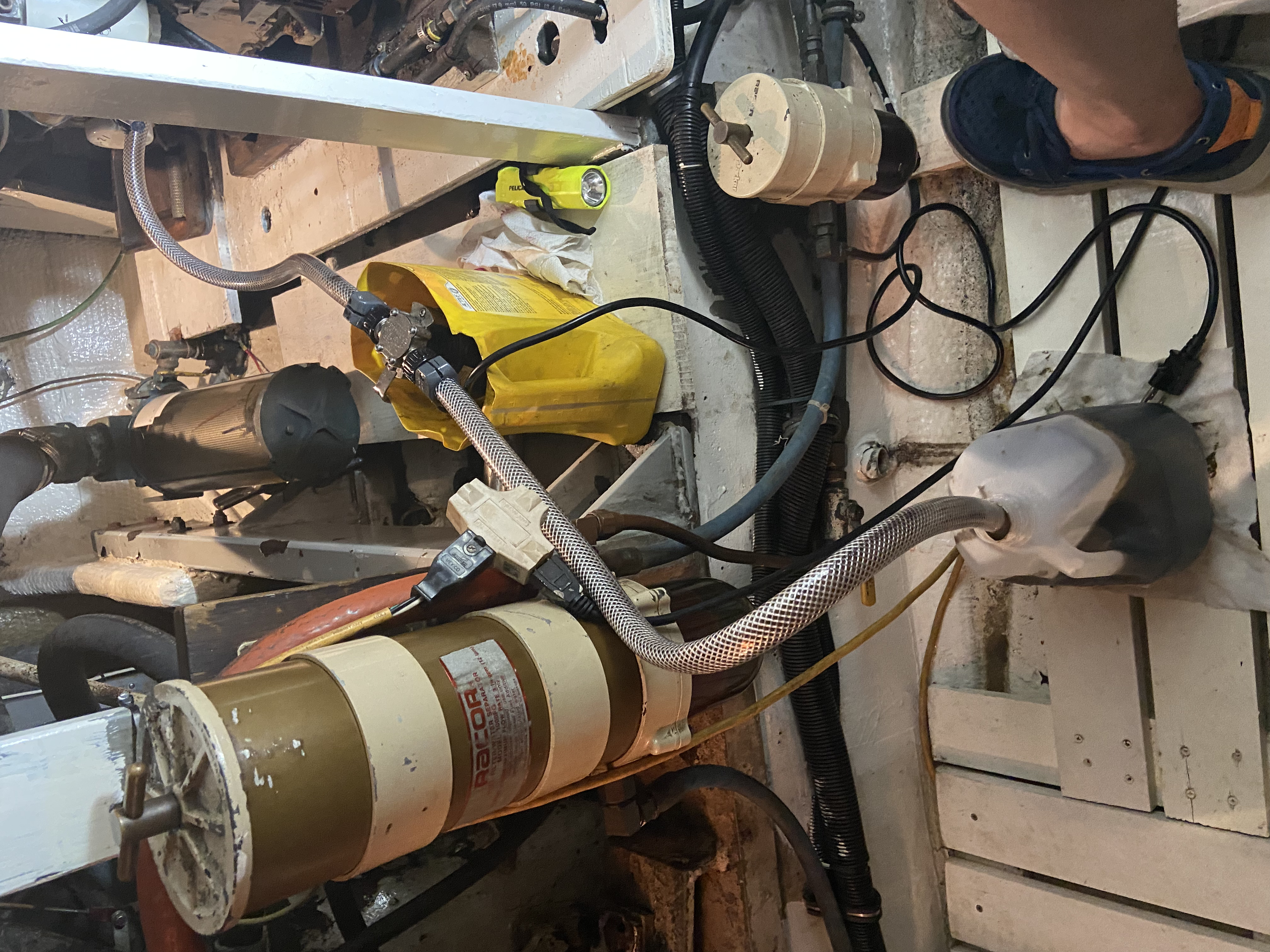
Pump and discharge hose routed to one gallon jug
Refilling with New Oil
The new oil going in is Shell Rotella T 15W-40. To refill, I’m using a small funnel and a one quart container. The one gallon Rotella container is very difficult to get into a good position at the fill location on the engine without spilling oil everywhere. The one quart container is much easier to handle and position at the fill. After I get three quarts in, I’ll check the level on the dip stick and then fill more slowly until I get to the full mark.
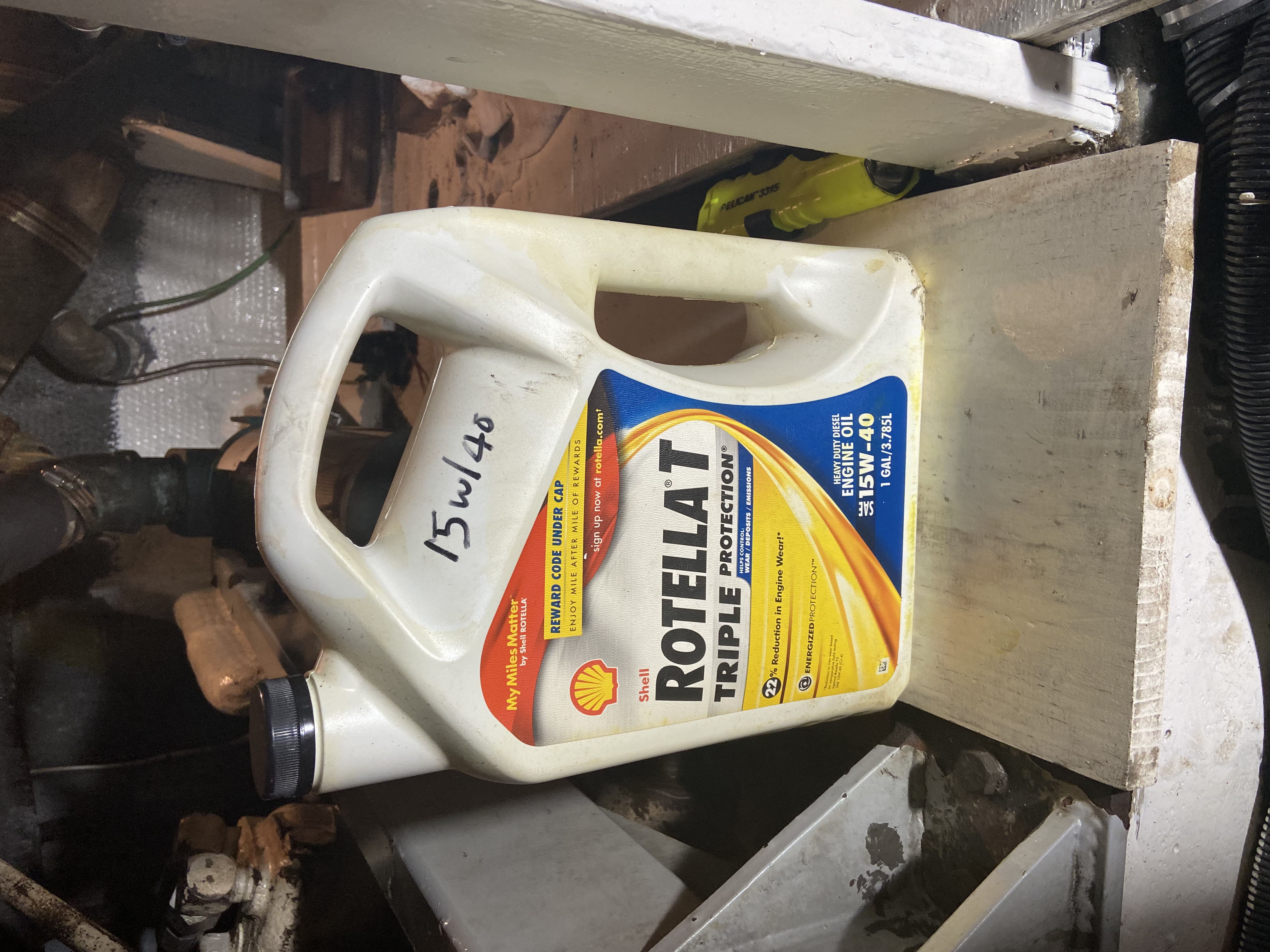
Filter Changeout
The oil filter is a spin on type so its removal and installation is very simple. It is horizontally mounted, which will lead to some oil running out when it is being unscrewed. An absorbent pad or rag placed below the filter will soak up what spills out. Prior to putting the new filter on, remember to lubricate the gasket with some new oil. I’m using a Donaldson filter, part number P550335.
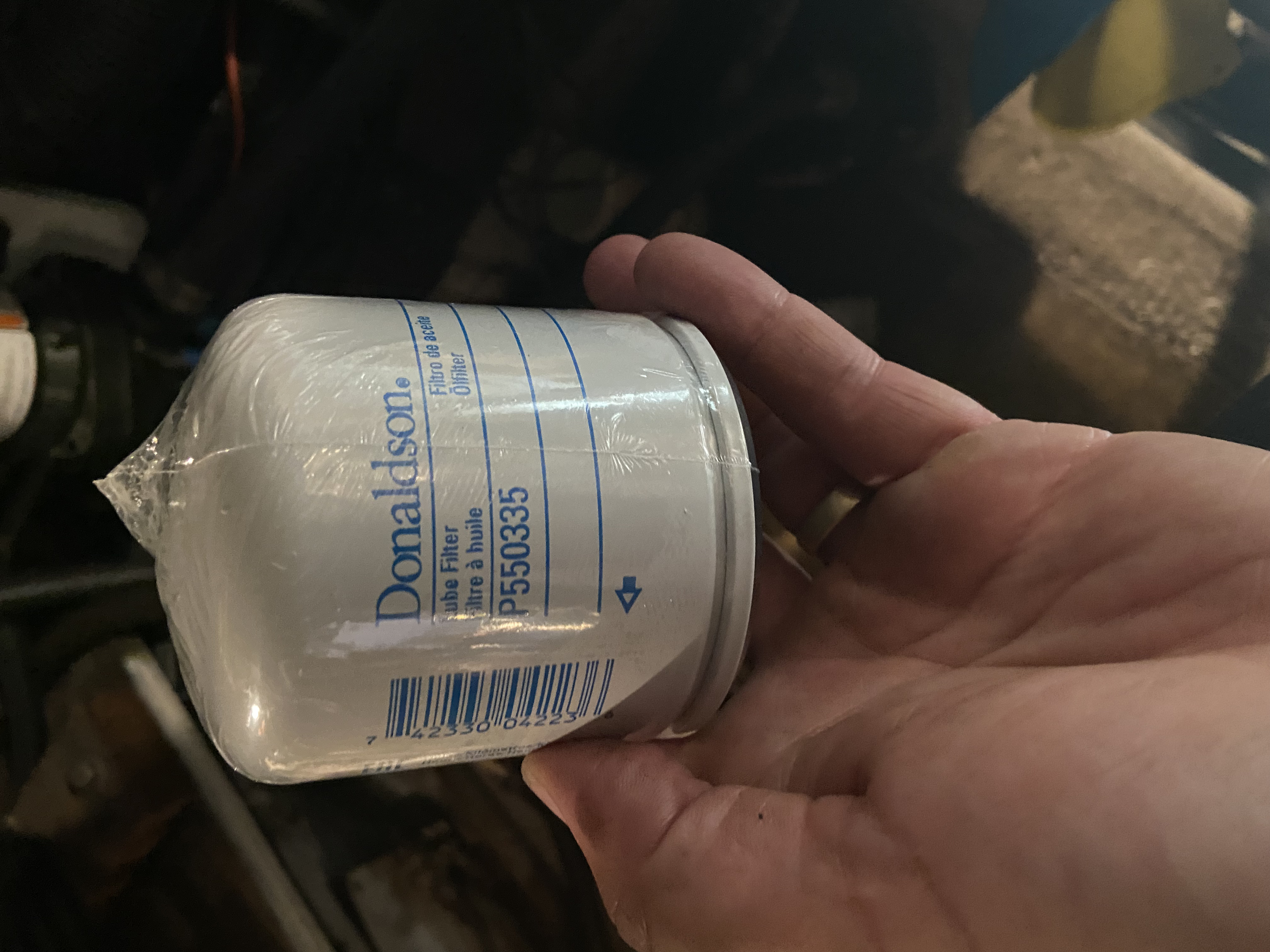
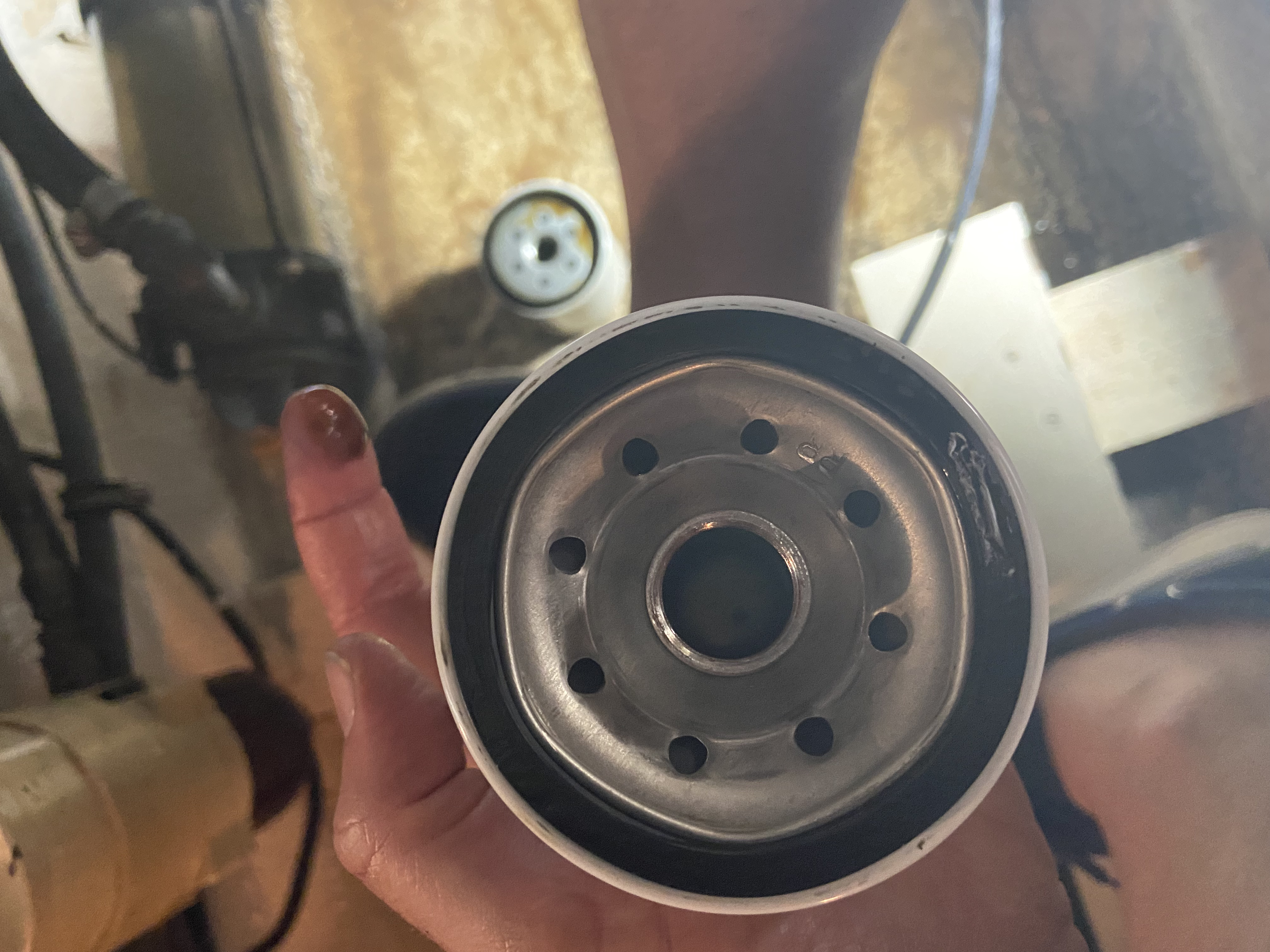
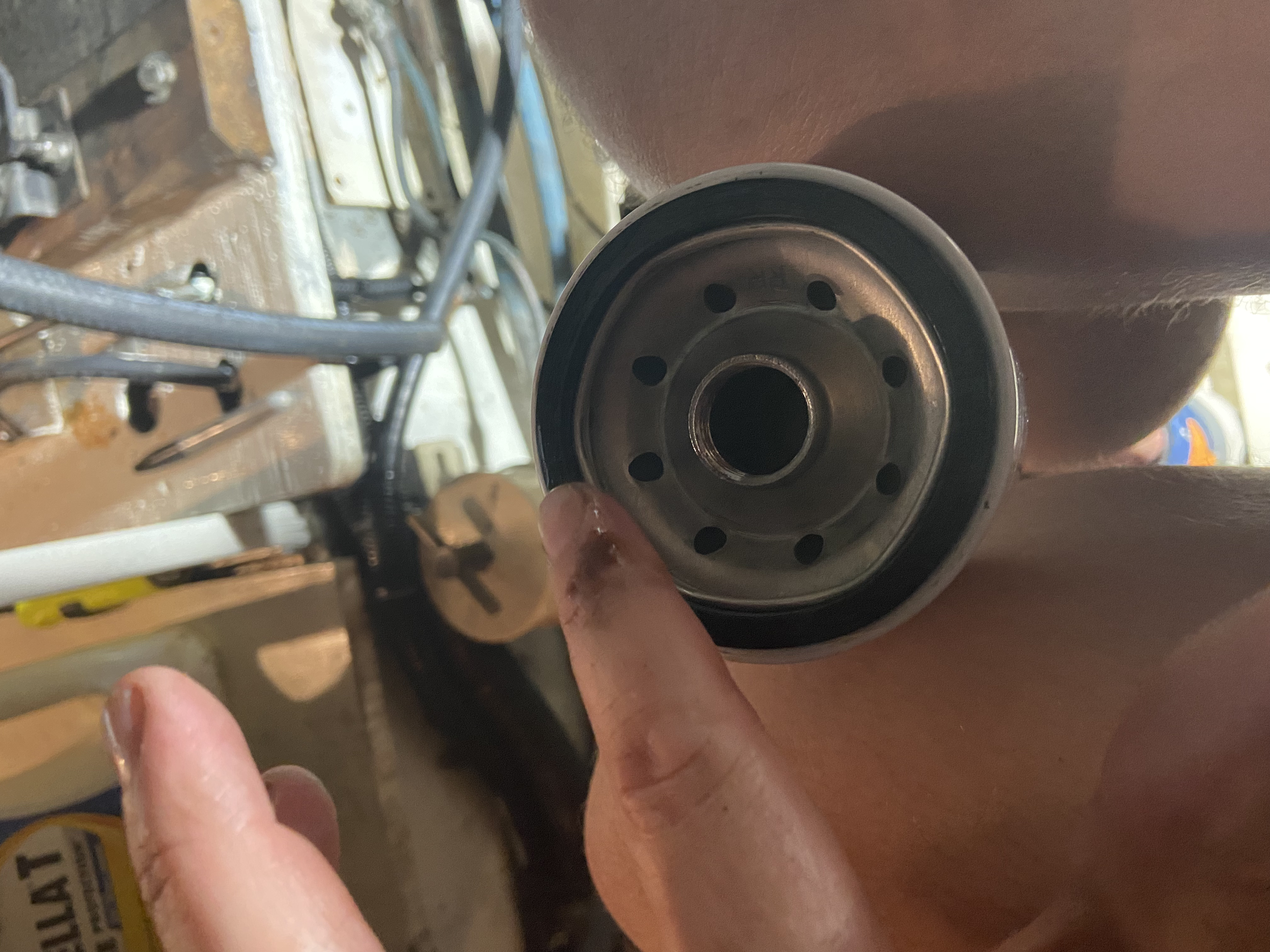
Rubbing oil on the gasket
It is also a good practice not only to log all of this maintenance in your maintenance log, but also to write on the filter the date of change and hours on the engine at the time of change. Good record keeping is an important part of the maintenance process.
Primary and Secondary Fuel Filter Change
Primary
The primary is a Racor similar to the Racor 1000FG on the main engines, but smaller in size. It operates, is constructed, and is maintained in the same way as the main engine Racors, which is discussed here. The change interval that we are following for this filter is every other oil change or every 300 hours.
As you can see in the pictures below, it was definitely time for a filter change and cleaning.
Secondary
The secondary filter is also changed during every other oil change or every 300 hours. It is a spin on filter with a drain on the bottom that is used to remove water it captures. We still had a few Lister Petter brand filters onboard left by the previous owner, but when those run out we will be switching to a more reasonably priced Donaldson filter. As with the new oil filter, I also marked the date of change and engine hours at the time of change on it.
Just like the secondary fuel filters on the main engine, this filter also needs to be filled to the top with clean diesel prior to installing it. If not, air will get into the fuel lines and the engine will not start.
Test Run
Once all of the maintenance is complete, it’s time to run the engine. Check your gauges and make sure the readings are all within their normal range. Also, closely inspect the engine while it is running. Look for leaks at the filters, bubbles in the Racor, or anything else out of the ordinary. After you shut down the engine, check the oil level again. Since the filter on this engine is horizontally mounted, I could not fill it prior to installation. After running the engine, some of the oil will remain in the filter and the level on the dipstick may no longer be at full. Add oil as needed to get back to the full mark.
Once you’re sure the everything is good, log it in your maintenance logbook. Having a detailed record of all maintenance completed will make your life easier. It’s a great way to stay on top of maintenance intervals, and the information can assist you with troubleshooting when future problems arise. Also, should you eventually decide to sell the boat, a good maintenance log is always a welcome sight for a prospective buyer.

